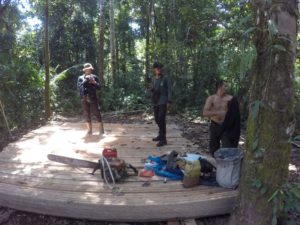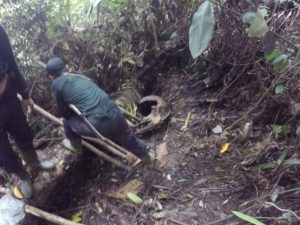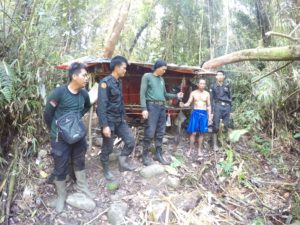The latest report from FFI shows clearly the impact felt by the Kerinci TPCU Rangers from COVID-19 during 2020.
This long-running conservation project aims to bring about a natural increase in Sumatran tiger populations in the Kerinci Seblat National Park (KSNP) through detecting and reducing threats to tiger, prey and habitat supported by collaborations between national, local government, local civil society and forest-edge communities.
The Covid-19 pandemic imposed significant constraints on TPCU activities during periods of local and national lockdown and travel restrictions. The report shows that the numbers of patrols carried out and distances walked were less than planned, while routine monitoring of the activities of some suspected poachers could not be conducted due to movement restrictions. The month of Ramadan, always a busy one for the rangers from the local increase in deer poaching fell in April and May during the heaviest travel bans.
Despite this, the report contains really positive news. Whilst the travel bans affected the Kerinci TPCU rangers, the ban also restricted the movement of would-be poachers and the lack of international travel disrupted illegal wildlife trade routes. Records of live tiger snares in the core area have for the fourth consecutive year been far below the long-term programme average.
Not only that but the results of survey and patrol data analysis suggest that tiger Occupancy, Density and Frequency of Encounter rates have all risen a sure sign that the local population of Sumatran tigers continues to thrive.
As the report points out “tigers in Kerinci Seblat continue to face a range of threats while the gradual reopening of international transport links in 2021 and the economic impacts of the Covid-19 pandemic may offer significant conservation challenges.”
Thank you to the whole team at Kerinci Seblat National Park for doing such an amazing job despite the circumstances.
Project activities and achievements:
- Six TPCUs conducted 104 SMART forest patrols across 1696 km (1,054 miles) in the national park and park-edge forests.
- Patrols recorded a minimum of 95 tigers with Frequency of Encounter stable or better at 1-18.2km (1-18.5km in 2019-20) and Effort to record tiger improving to 1 tiger per 5.9 patrol days (1-6.25 in 2019-2020) and 1-4.2 days in the Core Area.
- Sumatran tigers recorded present on 62% of all patrols conducted (57% in 2019-2020).
- Dedication of TPCU personnel to tiger conservation was recognised with six personnel receiving awards from the Director General of Nature & Ecosystems Conservation, Ir Wiratno. The recipients included Sukarno, Andi Siswanto and M Rozali who joined the PHS team at inception, in 2000.
- Six active tiger snares were recorded on three patrols with Effort to detect active snares at 1-94 days (1-70 days in 2019-2020) representing the fourth consecutive year in which direct threat to tiger was far below the long-term programme average.
- The Covid-19 pandemic severely disrupted investigations, however, 90 investigations and ‘for information’ reports were logged and graded in 16 districts & municipalities of four provinces.
- Investigations supported one successful tiger law enforcement action resulting in the arrest of a tiger poaching and trade syndicate operating across two or more provinces of Sumatra island. Investigations also supported two pangolin law enforcement actions, one resulting in the arrest of an individual believed to be trading tigers, Malay pangolin and helmeted hornbill.
- Formal and informal warnings and advisories were issued to 33 men in the course of 18 patrols for a range of wildlife and forest law offences with three chainsaws confiscated. Two men were arrested and charged with illegal logging offences.
- Eight human-tiger conflicts responded to and mitigated by TPCUs. One of these incidents involved livestock predation. One human-Malay sun bear conflict resolved through relocating the bear to national park forests.
- Analysis of Tiger Occupancy surveys conducted across the national park by the FFI/KSNP Tiger Monitoring team proposes that tiger Occupancy in Kerinci Seblat National Park has risen, since 2007-2008 from 83% to 94%.
- Camera trapping in the Core Area in 2020 by the Tiger Monitoring team recorded an increase in tiger density with a record 15 individual tigers identified with in-depth analysis of records demonstrating a consistent rise in tiger densities in the Core Area since 2014.

A confiscated chainsaw in the park 2020 ©FFI/KSNP

An endangered Malay tapir caught and killed in a tiger snare © FFI/KSNP

Poachers arrested in December 2020 © FFI/KSNP

A formal warning to an armed deer hunter in Bengkulu. © FFI/KSNP

